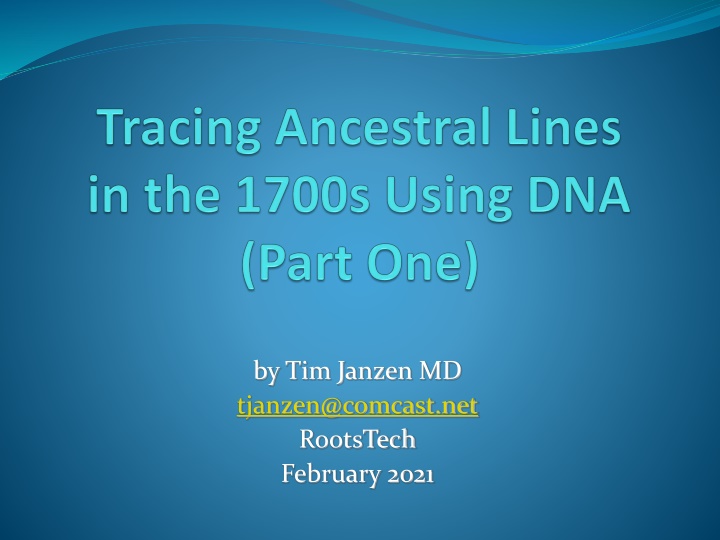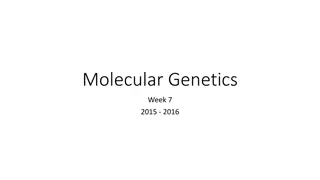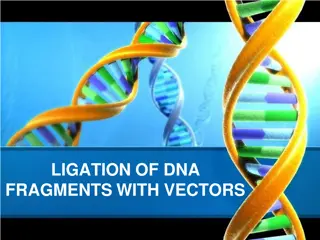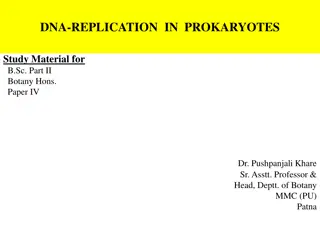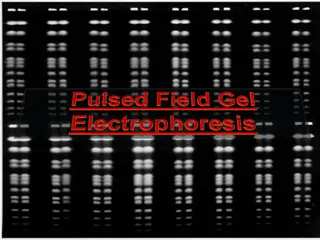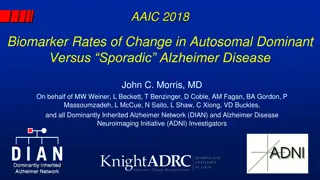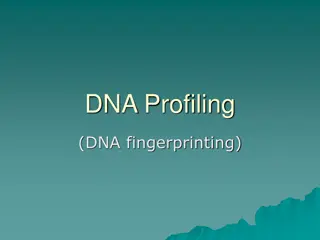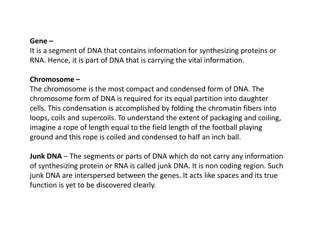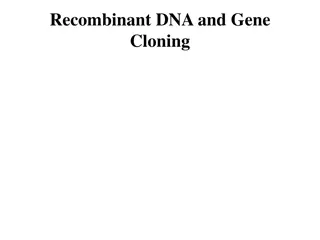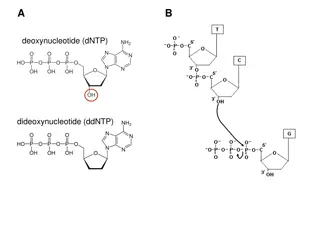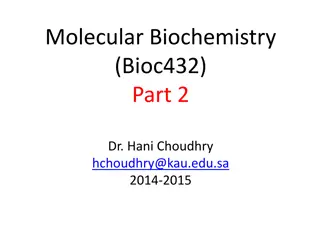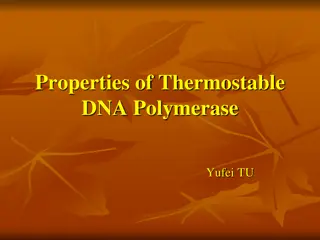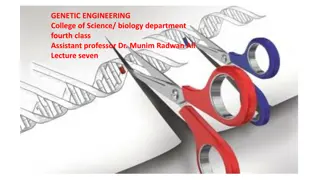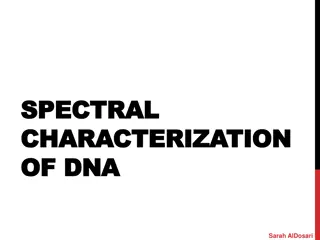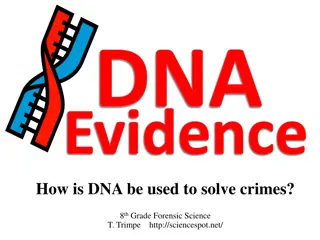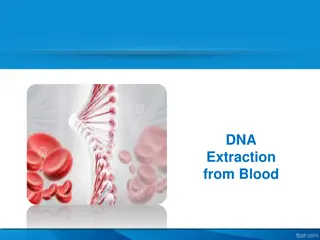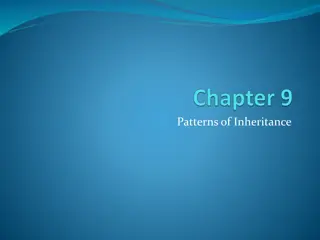Autosomal DNA Basics and Testing Overview
Autosomal DNA testing is a valuable tool for genealogical research, aiding in verifying family trees, breaking through genealogical brick walls, and uncovering ethnic and regional ancestry. Learn about the basics of autosomal DNA, its applications, and recommended testing labs.
Download Presentation

Please find below an Image/Link to download the presentation.
The content on the website is provided AS IS for your information and personal use only. It may not be sold, licensed, or shared on other websites without obtaining consent from the author.If you encounter any issues during the download, it is possible that the publisher has removed the file from their server.
You are allowed to download the files provided on this website for personal or commercial use, subject to the condition that they are used lawfully. All files are the property of their respective owners.
The content on the website is provided AS IS for your information and personal use only. It may not be sold, licensed, or shared on other websites without obtaining consent from the author.
E N D
Presentation Transcript
by Tim Janzen MD tjanzen@comcast.net RootsTech February 2021
Overview Background information about autosomal DNA Organizing your DNA matches Doing autosomal DNA analysis
Autosomal DNA May be used to determine the relative degree to which 2 people are related to each other on any line of descent if they share at least one common ancestor in the recent past Has significant potential for genealogical researchers since there are a total of 44 chromosomes that can be tested Limited by the fact that the chromosomes recombine at conception and thus one half of each parent s markers is not passed to a specific child Of most benefit in determining relationships between people who share a common ancestor within 6 to 8 generations
Autosomal DNA Testing Labs 23andMe www.23andme.com Family Tree DNA Family Finder test www.familytreedna.com Ancestry.com AncestryDNA test http://dna.ancestry.com MyHeritage www.myheritage.com Living DNA www.livingdna.com See Tim Janzen s Autosomal DNA Comparison Chart at http://www.isogg.org/wiki/Autosomal_DNA_testing_ comparison_chart for a comparison of these tests
Why should genealogists do autosomal DNA testing? 1. Autosomal DNA testing is a powerful tool to verify the accuracy of your family tree. 2. Autosomal DNA testing may allow you to break through some genealogical brick walls in the 1800s and possibly the 1700s that exist due to the lack of genealogical records. 3. Autosomal DNA testing can give you insights into your ethnic and/or regional ancestry that you can t determine in any other way.
Autosomal DNA Basics Approximately 7080 cMs in autosomal DNA Match size is generally a minimum of ca 7 cMs, so there are a minimum of 1000 triangulated groups All ancestors generally contribute at least a portion of their autosomal DNA to each of their descendents back to at least 5 to 6 generations At 10 generations back in time perhaps only about 12% of one s ancestors are contributors of autosomal DNA to your genome; only about 120 of your 1024 ancestors are genetic ancestors
Autosomal DNA Testing Basics Parent/child pairs share 50% of their autosomal DNA Siblings share 50% of their autosomal DNA Aunts, uncles/nieces, nephews share 25% of their autosomal DNA First cousins share 12.5% of their autosomal DNA Second cousins share 3.125% of their autosomal DNA Third cousins share 0.78% of their autosomal DNA Fourth cousins share 0.195% of their autosomal DNA Fifth cousins share 0.049% of their autosomal DNA Sixth cousins share 0.0122% of their autosomal DNA
Autosomal DNA Testing Basics Parents/children share 3540 autosomal cMs Siblings share 2600 cMs on average Aunts, uncles/nieces, nephews share 1770 cMs on average First cousins share 885 cMs on average Second cousins share 221 cMs on average Third cousins share 55 cMs on average Fourth cousins share 14 cMs on average Fifth cousins share 3.5 cMs on average Sixth cousins share 0.76 cMs on average
Ranges of Total cMs of IBD Segments Based on Family Relationship (based on 7080 cMs in 23andMe s DNA comparison feature) See reference data at http://www.thegeneticgenealogist.com and https://isogg.org/wiki/Autosomal_DNA_statistics Parent/child: 3539-3748 cMs 1stcousins: 83-1559 cMs (Expected: 885 cMs) 1stcousins once removed: 54-903 cMs (Expected: 442 cMs) 2ndcousins: 47-760 cMs (Expected: 221 cMs) 2ndcousins once removed: 0-466 cMs (Expected: 111 cMs) 3rdcousins: 0-334 cMs (Expected: 55.3 cMs) 3rdcousins once removed: 0-332 cMs (Expected: 27.7 cMs) 4thcousins: 0-54 cMs (Expected: 13.8 cMs)
Odds of matching a relative after doing an autosomal DNA test 1stcousin or closer: 100% 2ndcousin: 100% 3rdcousin: ca 90% 4thcousin: ca 50% 5thcousin: ca 15% 6thcousin: ca 0-2%
Two basic types of autosomal DNA analysis for genealogical purposes Quantitative analysis. This is where one compares the amount of autosomal DNA in cMs that two or more people share in common to see if it meets the amount expected. This technique can be safely used going back 4 to 5 generations and with caution to 6 generations. Triangulation. This is the process of reviewing the pedigree charts of people who match on the same autosomal DNA segment to see if a common ancestor can be found. This technique can be used going back many generations. The two techniques can frequently be combined, at least for evaluation of genealogical relationships going back 5 generations.
Verifying Known Genealogical Relationships Verify that first cousins share between about 500 and 1200 cMs. Verify that second cousins share between about 75 and 450 cMs. Create clusters of cousins if at all possible to verify all relationships more distant than second cousin. The average number of shared cMs for all cousins at a given level of genealogical relationship should be somewhere close to the expected number of shared cMs as shown at https://isogg.org/wiki/Autosomal_DNA_statistics.
Managing your match list of close relatives who have tested Maintain an Excel file for all known relatives out to at least the 5thcousin level of genealogical relationship Include this type of information in the file: surname or ancestor through whom you are related to the match, full name of the match, known genealogical relationship (or best guess as to the relationship); e- mail address and other contact info; company match tested with; passwords to their DNA accounts (if you have them), GEDmatch kit #
Sources for finding cousins to run genetic comparisons against Ancestry.com 23andMe MyHeritage Family Tree DNA s Family Finder Living DNA GEDmatch (www.gedmatch.com)
WikiTree may reveal cousins you weren t aware of who have done DNA testing
Key Points in Quantitative Autosomal DNA Analysis Target the oldest generation for testing. Maximize the number of people tested if at all possible. Test people from different lines of descent if at all possible. Analyze the people who should be most closely related to each other first. Analysis of their results will generally be more accurate than analysis of more distantly related clusters.
Key Points in Quantitative Autosomal DNA Analysis Do separate analyses for matches at each generational level. Discard HIRs that represent DNA segments that were passed down through a different ancestral line other than the one being analyzed (this requires chromosome mapping). Generally speaking, discard all HIRs under 5 cMs and HIRs with fewer than 400 SNPs unless you are certain that the HIR represents a valid DNA segment Always be willing to review previous conclusions you may have drawn about genealogical relationships.
Strategies for Breaking through your Genealogical Brick Walls
Strategies for Breaking through your Genealogical Brick Walls in the 1700s Create clusters of cousins who descend from each of the ancestors who are your genealogical brick walls. Map the chromosomes of each person in the cluster as best as feasible. Maintain master match list spreadsheets for your closest older relatives. Organize all of your matches into triangulated groups. Study the pedigree charts of all of the people who match a segment that has been linked to an ancestor who is your genealogical brick wall. Particularly review the pedigree charts of those people who share the most cMs on average with your cluster of cousins.
Strategies for Breaking through your Genealogical Brick Walls in the 1700s Offer to pay for additional testing of relatives of your closest matches in an effort to pinpoint the genealogical connection. Try to get all of your closest relatives and your closest matches to upload their data to GEDmatch so that you can run comparisons for clusters of cousins in GEDmatch. Do Y chromosome testing at Family Tree DNA (preferably doing the BigY if possible) using a male representative for each one of your proven ancestral surnames. Do a complete mitochondrial DNA sequence at Family Tree DNA using a representative for each one of your proven ancestral lines.
Verified Lines for Betty Janzen All names in green in this slide and in the next 4 slides have been verified as ancestors of Betty Janzen, generally as the result of matches who descend from a sibling of the ancestor and who share the appropriate amount of DNA with Betty and her other relatives who descend from that ancestral line.
Questions? Feel free to contact me at tjanzen@comcast.net
